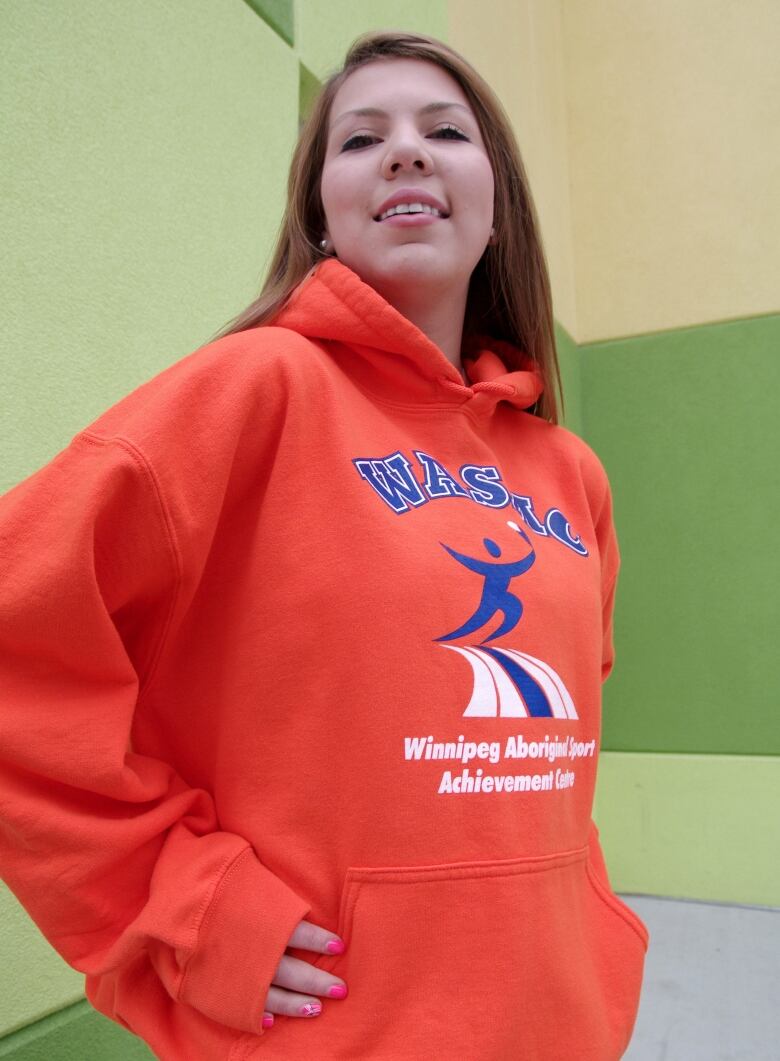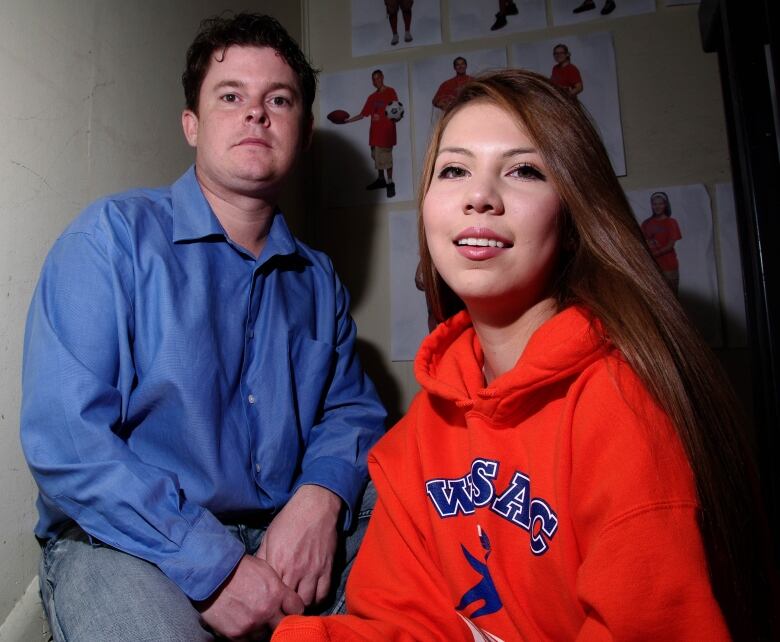Aboriginal sports centre helps teen reach goals
Finding success through the Winnipeg Aboriginal Sports Achievement Centre

Jessica Lavallee said she would have headed down a bleak road if it hadnt been for the Winnipeg Aboriginal Sports Achievement Centre.
A lot of my old friends never graduated, are in trouble with the law and some even have kids. Id be there too because I was such a follower, said Lavallee, 18, who is Mtis-Cree and lives in Winnipeg.
Lavalle graduated from highschool last year, worked at the Manitoba Human Rights Commission for the summer and now attendsthe University of Winnipeg.
"I couldnt have accomplished this without WASAC.
- Visit CBC Aboriginal
- Montreal-based tech group helps indigenous youth define identity through gaming
WASAC builds capacity in Indigenous youth by offering them a mix of courses in leadership and mentorship. Participants then hone their skills in childrens sports and recreational programs. The programs are free, because almost all of WASACs participants are from families barely getting by, said Executive Director Trevor LaForte.

Were funded 70 per cent by government and 30 per cent by private donations. We hope to change that to 50-50 within three years, LaForte said.
Programs and camps including transportation, sports equipment and snacks are open to children in Grades 4 to 6, who come from more than 100 schools in Manitoba and from communities in the provinces northern region. Beyond athletic instruction, participants are given the chance to learn about indigenous culture and where their true potential lies.
Lavalleeknows about obstacles
Jessica Lavallee certainly knows about obstacles. Shes faced them from the time she drew her very first breath. She was born premature and with a genetic disorder that saw her intestines located outside of her abdominal cavity.
``Mom could have chosen not to have me because of those complications. I was labelled a `miracle baby,' she said.
I think about my old friends. They never had the support that I did, and having that someone who cares really makes a difference.- Jessica Lavalee
Lavallee lived a chaotic early childhood with her parents and two sisters. The family moved several times, she kept changing schools, her parents split up. After that, my father wasnt really a part of my life.
Lavallees grandparents raised her from the age of eight, when they introduced her to jigging and square dancing, both staples of Mtis culture. Thats how she met WASAC founder Kevin Chief.
He was learning how to dance and we were there. He became a really good friend of our family and he told my sisters and me about WASAC.
Lavallee went to day camps that summer with other children from her jig troupe, finding herself immersed in new activities and surrounded by new friends. And none too soon.
In Grade 6, the crew I hung out with starting to skip class a lot. They started stealing, she said. Amongstindigenous youth in the region, suicide is so high as to be termed endemic by a Service Canada report.
Suicide prevention work is a key reason why WASAC was brought in to work with northern First Nations, LaForte said.
A place to belong in the big city

Moving to a city from a remote place can be a big burden, so this is a way to meet and stay connected with friends, LaForte said.
Winnipeg has the highest percentage of indigenous and Mtis youth of any city in Canada, according to Statistics Canada. In a province where indigenous youth are incarcerated at a rate eight times higher than non-indigenous youth, gangs hold a dark allure. They feed off a yearning to belong especially in someone who may have experienced abject poverty, placement in child welfare, lack of education, or exposure to family violence, the social planning council paper notes.
WASACs driving aim is to provide a positive sense of belonging, LaForte said. ``If you dont, kids will find it somewhere else.
What about kids who age out after such programs end in Grade 6?Beginning at age 13, through WASAC, many become volunteers for after-school and summer camps. From age 15 to 17, volunteers are encouraged to work as junior leaders at summer camps.
Lavallee progressed through each level, eventually working as a junior camp leader for the past three years. I still remember when I got my first paycheque. That was a really big thing, she said.
WASAC employs about 10 youth during the school year and up to 100 during the summer months, making it one of the largest employers of Indigenous children and youth in Canada, according to LaForte.
Life after WASAC
And now, for some after age 17, there is another stepping stone. This year WASAC partnered with the Manitoba provincial government to create 10 youth internship positions with various departments in the civil service.
Lavalleewas one of those interns. Her work with the Manitoba Human Rights Commission helped her discover that she'd like to help people someday with discrimination issues.

In May, wearing a black cap and gown, Lavallee walked the stage and received her diploma. There, witnessing her achievement, was her mother Claudette, whom she counts as her best friend, her grandmother, who was a huge supporter, her two sisters, and WASAC co-founder Kevin Chief, who shed met on a dance floor years before.
As Lavallee scanned the room, her surprised eyes found another face. I saw my father in the audience. It was the first time in a long time that I saw him and that was really huge for me. Recalling the moment, her voice trembled. Tears streamed down her face.
Success for WASAC youth
Lavallee is now in her second semester at theUniversity of Winnipeg with plans to focus onhuman rights or education.
I think about my old friends. They never had the support that I did, and having that someone who cares really makes a difference. It was a struggle. But I did it, and I want to show kids that they can do it too.
Back at WASACs headquarters, LaForte talked about whats next for WASAC: more internships for WASAC grads. Perhaps a partnership with community colleges for trades training. Definitely an alumni association that will give participants a way to stay in touch and network.
I have the best job in the world, LaForte said. Its no small thing to know that you are making a big difference in the lives of kids.
This story was produced inpartnershipwithJournalists for Human Rights.It is part of a JHR series, called Leading Together,that profiles innovativeexperiments in Aboriginal youth empowerment.












_(720p).jpg)


 OFFICIAL HD MUSIC VIDEO.jpg)
.jpg)



























































































